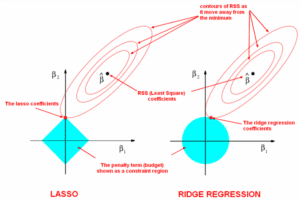The Evolution of Gibbs Sampling: A Bayesian Revolution
Developed in 1984 by Geman and Geman, Gibbs sampling marked a significant breakthrough in Bayesian statistics. This innovative algorithm introduced a practical method for sampling from complex probability distributions. As a cornerstone of Monte Carlo methods, Gibbs sampling plays a crucial role in fields such as machine learning, genomics, and natural language processing.
What Is Gibbs Sampling? Simplifying Complex Probability Models
Gibbs sampling is a Markov Chain Monte Carlo (MCMC) algorithm designed to generate samples from a joint probability distribution by iteratively sampling from the conditional distributions of individual variables. Imagine solving a jigsaw puzzle: each piece represents a variable. By focusing on one piece at a time (conditional distributions), Gibbs sampling gradually uncovers the complete picture (joint distribution).

Why Use Gibbs Sampling? Addressing Challenges in Modelling
Gibbs sampling effectively tackles several key challenges in probabilistic modelling:
- Simplifying Complex Systems: Breaks down high-dimensional distributions into manageable conditional computations.
- Handling Missing Data: Accurately estimates unknown values in datasets.
- Bayesian Inference: Supports parameter estimation and decision-making under uncertainty.
How Gibbs Sampling Works: A Step-by-Step Guide
Using Gibbs sampling involves a systematic process:
- Define the Joint Distribution: Establish the probability model for all variables.
- Determine Conditional Distributions: Specify the conditional probabilities for each variable.
- Iterative Sampling: Sequentially sample each variable while keeping others fixed.
- Analyse Outputs: Use the generated samples for inference, prediction, or validation.
Types of Gibbs Sampling: Blocked, Collapsed, and More
Gibbs sampling comes in different variations tailored to specific needs:
- Blocked Gibbs Sampling: Groups related variables and samples jointly from their combined distributions.
- Collapsed Gibbs Sampling: Marginalises out certain variables to reduce computational complexity.
Key Features That Make Gibbs Sampling Powerful
Gibbs sampling is widely recognised for its unique features:
- Iterative Refinement: The process improves sample accuracy with each iteration.
- Scalability: Handles large-scale datasets and models efficiently.
- Flexibility: Applicable across domains such as finance, physics, and artificial intelligence.
Top Tools for Gibbs Sampling: Stan, PyMC3, and TensorFlow
Several tools make Gibbs sampling accessible for researchers and practitioners:
- Stan: A flexible probabilistic programming language ideal for Gibbs sampling.
- PyMC3: A Python framework for Bayesian modelling and inference.
- R (coda package): Provides tools for visualising and analysing Gibbs sampling results.
- TensorFlow Probability: Integrates Gibbs sampling into deep learning workflows.
Real-World Applications of Gibbs Sampling in Australia
Gibbs sampling is transforming various Australian government sectors:
- Department of Health:
- Application: Disease modelling and vaccine efficacy estimation.
- Use of Gibbs Sampling: Provides accurate predictions and insights into public health trends.
- Australian Bureau of Statistics:
- Application: Imputing missing data in national surveys.
- Use of Gibbs Sampling: Enhances data completeness and reliability for policymaking.
- CSIRO:
- Application: Climate modelling for weather prediction and environmental impact analysis.
- Use of Gibbs Sampling: Enables more precise and actionable climate forecasts.
Conclusion
Gibbs sampling remains a foundational tool in Bayesian statistics, enabling efficient sampling from complex probability distributions. Its versatility and efficiency make it invaluable across industries, from healthcare and statistics to climate research. With powerful tools and ongoing advancements, Gibbs sampling continues to unlock new possibilities in data analysis.
How interested are you in uncovering even more about this topic? Our next article dives deeper into [insert next topic], unravelling insights you won’t want to miss. Stay curious and take the next step with us!








